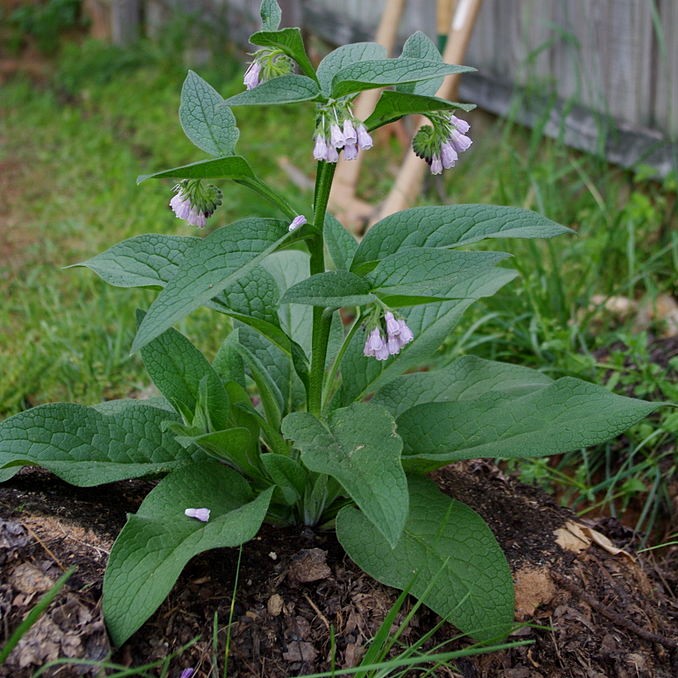| Weight | N/A |
|---|---|
| Dimensions | N/A |
| Botanical Name | Symphytum × uplandicum 'Bocking 14' |
Russian Comfrey ‘Bocking 14’
$10.00


Russian comfrey ‘Bocking 14’ is a sterile hybrid that does not produce seeds. The plants can and will spread by root cuttings, so do not disturb the roots if you do not want the plant to spread. Or, dig up sections of root to start new plantings in new areas.
This plant is an amazing nutrient accumulator, and its leaves are more potent than kelp for fertilizing your gardens, orchards and fields.
Make leaves into fertilizing tea, add to compost piles or feed to poultry and livestock.
Bocking 14 Russian Comfrey was created by Lawrence D. Hills in the 1950’s and his work on this remarkable and generous plant is recognized as the definitive work world-wide on the topic.
His recommendations are based on research spanning centuries of common uses including animal feeds, herbal and medicinal remedies for stock, fowl and humans and much more.
The Comfrey Report written by Lawrence D. Hills is available on Amazon as a Kindle, paperback or hardcover book. Here is the book description from that page:
“Comfrey is noted by both organic gardeners and herbalists for its great usefulness and versatility. Of particular interest is the ‘Bocking 14’ cultivar of Russian comfrey. This strain was developed during the 1950s by Lawrence D. Hills, who founded the organic gardening organisation now known as Garden Organic.
Lawrence D. Hills was the world authority on comfrey. In this book, originally published in 1976, he wrote for farmers and gardeners in all countries, showing how this useful plant could be cultivated in both tropical and temperate zones to produce a crop equally rewarding for gardener, smallholder and mechanised farmer.
Subtitled Past, Present and Future, Hills’s work remains the most comprehensive survey of the properties and cultivation of comfrey, and undoubtedly the essential book on the subject, as well as a lasting testament to his indefatigable efforts to achieve a better understanding of it.”
Our comfrey root will ship in early spring and should be planted in rich moist soil right away. Do not cut the plants leaves for fertilizer uses until the second year of growth begins.
Limit flowering of the plant to improve growth in the first year by removing flower stalks early. Flower stalks may also root, so soak them in water for fertilizer use to prevent unwanted spread of the plant.
Leaves can be used in gardens and plantings without concern for rooting so long as no root pieces are attached to the leaf. For this reason it is advised that leaves be cut and not pulled when harvesting.


Reviews
There are no reviews yet.